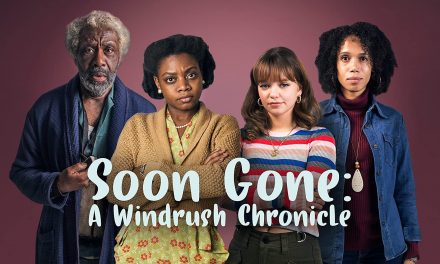When Stacey Abbott and Lorna Jowett hatched the idea for a book on TV Horror in the early 2000s, they had only a sense that by the time the book was published in 2012 there would be many more horror TV series to watch, write about, and discuss. In this follow up to TV Horror, the first full-length examination of horror on television, they take aim at global TV horror.
Television audiences and horror fans across the world may be most familiar with the latest big brands in TV horror such as The Walking Dead (US, 2010-), yet horror has always had a truly international reach. From anthology series to children’s drama, Belphegor [Phantom of the Louvre] (France, 1965), Historias para no dormir [Stories to Keep You Awake] (Spain, 1966–82), Children of the Stones (UK, 1977), Riget [The Kingdom] (Denmark, 1994-1997) and Goosebumps (Canada, 1995-98) terrified viewers, imprinted themselves on memories, and influenced the contemporary boom in horror on TV. With the expansion of TV channels, view on demand and streaming services, more and more content is needed, and niche productions with distinctive characteristics are more welcome than ever. The last five years have given us the moody and atmospheric Les Revenants [The Returned] (France, 2012-), adaptations of novel series like Bitten (Canada, 2014-16), contemporary reimaginings of queer horror classics in web series Carmilla (Canada, 2014), cross-genre Scandi series Fortitude (UK, 2015-) and Jordskott (Sweden, 2015-), films remade as TV, such as Wolf Creek (Australia, 2016-), original Amazon series like Tokyo Vampire Hotel (Japan, 2017-), one-off miniseries such as Au-delà des Murs [Beyond The Walls] (France/ Belgium, 2016), and American Netflix animated series Castlevania (US, 2017-) based on a series of Japanese video games. Horror on television shows no signs of abating, and more and more global productions are reaching audiences as national boundaries are eroded by digital technologies.
We seek proposals that address the full range and scope of ‘horror’ and ‘television’ in a global context, historical and contemporary. Chapters may engage with, though are not restricted to, the areas below.
- Global production and co-production, commissioning
- Distribution and global circulation via import/ export or illegal downloading
- Platforms and delivery: VoD, streaming, inter/national branding
- Translation, subbing, and dubbing
- Adaptations and remakes
- Forms and formats: serial drama, webisodes, webseries, miniseries, TV movies, long and short forms, non-fiction horror TV
- Aesthetics: visual and aural style, FX and make up; music and soundscapes
- Crossing over: international stars and creators
- Consumption and reception: global audiences and fandoms
- Cultural and national horrors: reimagining horror tropes in inter/national markets
- Inter/national representations and identities
- Horror v. terror
- Genre splicing and global TV trends
- Children’s international horror television
- Global transmedia horror: paratexts, overflow, narrative extensions
Proposals of 300 words, along with a short biography, should be submitted to both editors (s.abbott@roehampton.ac.uk and lorna.jowett@northampton.ac.uk) by 28 February 2018.





